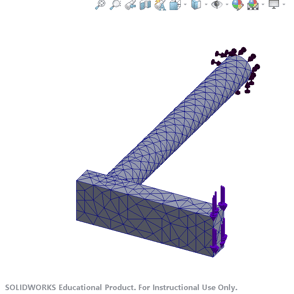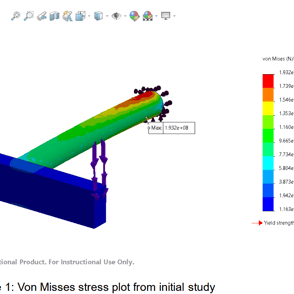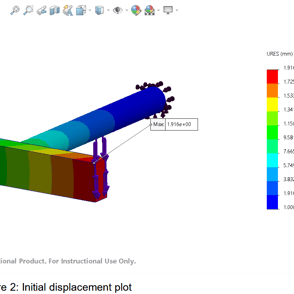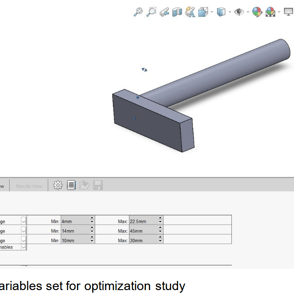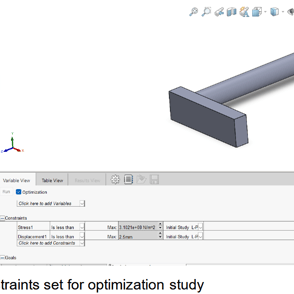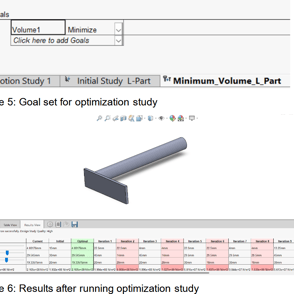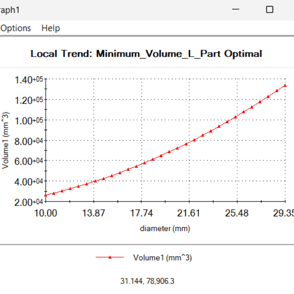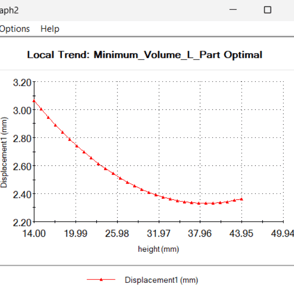Simulations
Mesh resolution
A mesh resolution study was performed to determine the optimal resolution that gave the best results while minimizing the computational requirements.
Velocity plot
This plot shows a 2D representation of the fluid flowing through the designed pipe geometry. The rounded pipes allows for the wort in the system to flow without a large pressure drop, meeting the desired specifications
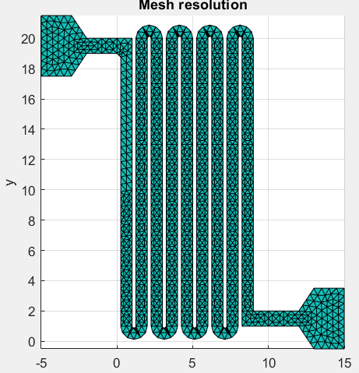

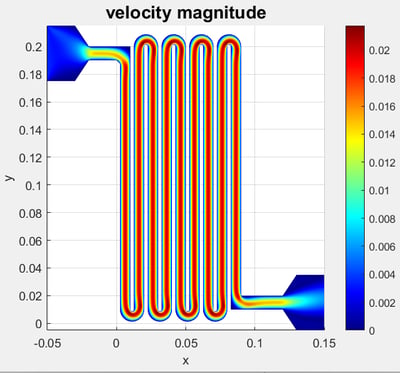

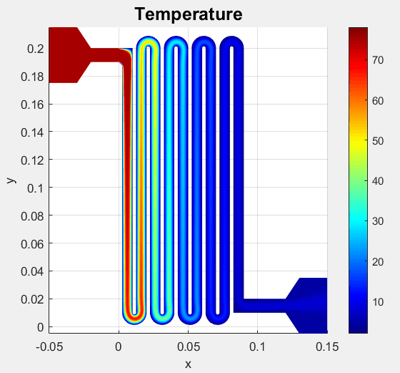

Temperature plot
This plot shows how the hot fluid entering the heat exchanger at the specified temperature is cooled as it travels through the cooled region leaving the outflow connector at the desired conditions all within the constrained dimensions
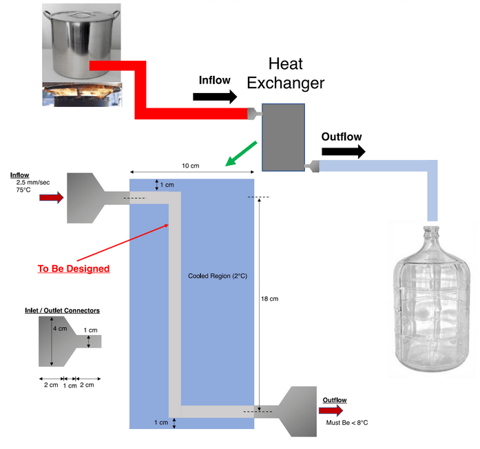

Heat Exchanger Project
This project focuses on the simulation and optimization of a heat exchanger used in a brewing system, leveraging two open-source programs: the free version of QuickerSim CFD Toolbox for MATLAB and Gmsh. Gmsh was utilized to generate the 2D geometry and mesh, which was then imported into QuickerSim for numerical simulation of heat transfer and fluid flow. The objective was to analyze and refine the heat exchanger’s design to improve thermal efficiency while meeting specified dimensional and operational criteria outlined in the project overview.
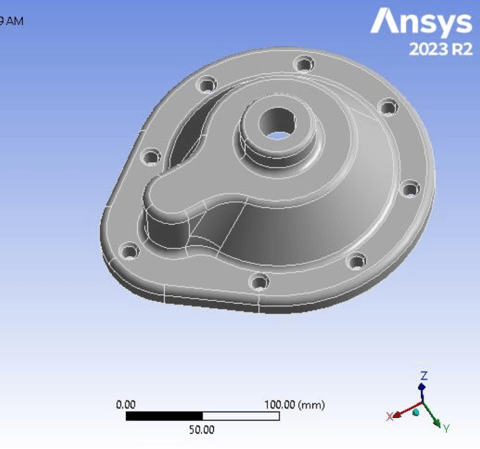

Thermal & Static Analysis
In this simulation, I evaluated thermal stresses in an aluminum pump housing subjected to non-uniform temperature conditions. The mating face was held at a constant temperature of 60 °C, simulating attachment to a temperature-regulated pump. Internally, the housing surfaces exposed to fluid were maintained at 90 °C, while the external surfaces experienced convective cooling with ambient air at 20 °C.
Boundary Conditions:
The flat mating surface was fixed in the normal direction to prevent translation.
Frictionless supports were applied at the eight countersunk mounting holes.
A simplified convection coefficient was applied to model heat loss to stagnant air.
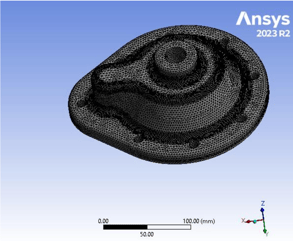
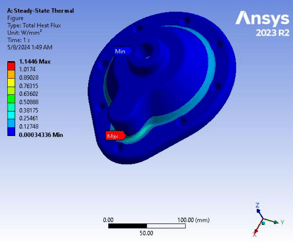
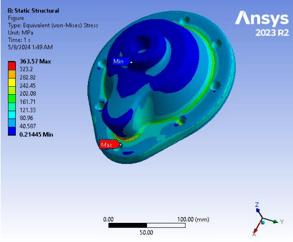
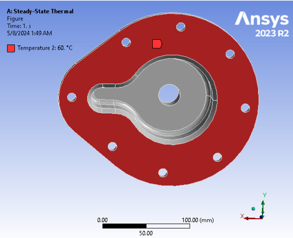
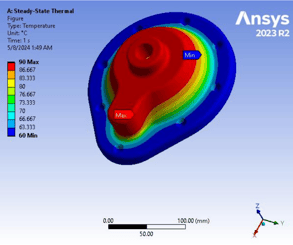

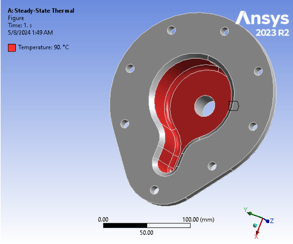
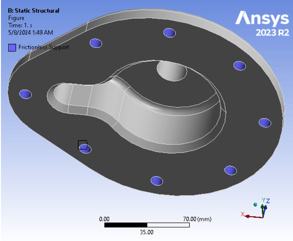
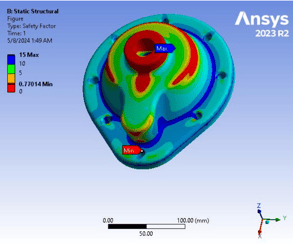
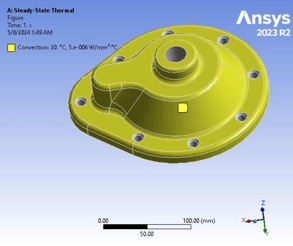
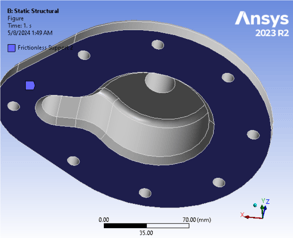













Static structural & Modal
This simulation investigates the structural integrity and vibrational behavior of a rotating circular saw blade made of stainless steel with a 10 in. outer diameter, 0.625 in. inner diameter, and 0.09375 in. thickness. The analysis simulates operation at a maximum speed of 5500 RPM, with the inner rim fixed to represent attachment to a shaft.
Simulation Breakdown:
A static structural analysis was conducted to determine stresses and radial deformation resulting from centrifugal forces at high rotational speed.
A pre-stress modal analysis followed to evaluate how the stress state influenced the natural frequencies of the disk. This allowed comparison between the operating frequency and the blade’s first few mode shapes.
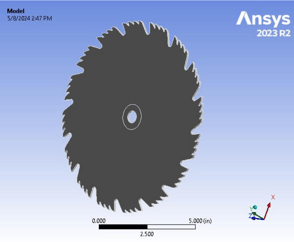
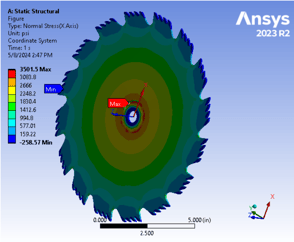
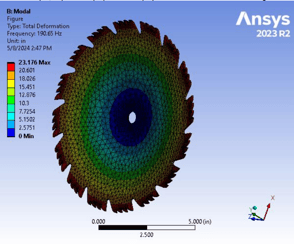
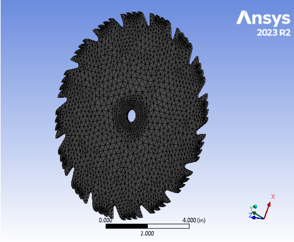
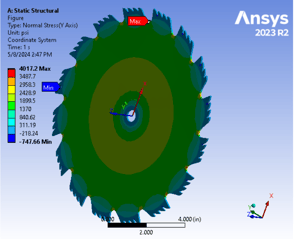
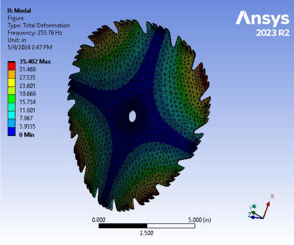
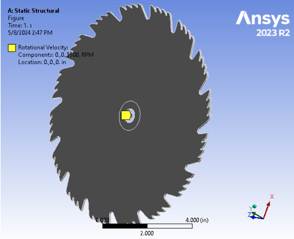
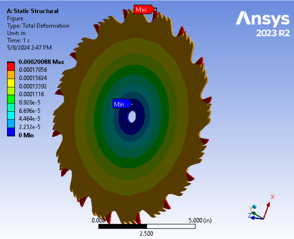
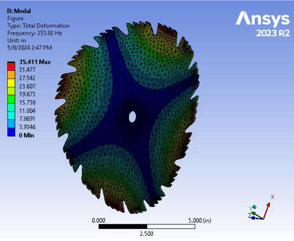
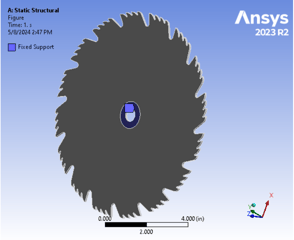
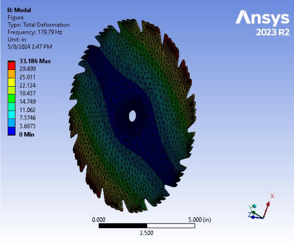
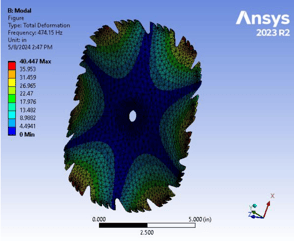












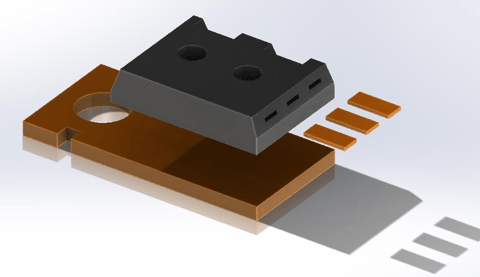

Transient Thermal Analysis
This simulation analyzes the transient thermal response of a microchip assembly subjected to a constant heat load. The assembly consists of five components: a ceramic microchip, three insulated copper terminal connectors, and a copper heat sink plate. The ceramic microchip is the only heat-generating component, producing 25 W of thermal power, which is dissipated to the environment via convection through all exposed surfaces of the microchip and heat sink.
The analysis was performed using ANSYS Workbench’s Transient Thermal module over a duration of 300 seconds. A step heat load was applied at time t = 0 and held constant throughout the analysis. All components were initialized at a uniform temperature of 25 °C. Convective heat transfer coefficients were applied at the boundaries: 100 W/(m²·°C) between the microchip and the air, and 250 W/(m²·°C) between the copper heat sink and the air. The copper connectors were treated as insulated bodies and did not participate in heat transfer.
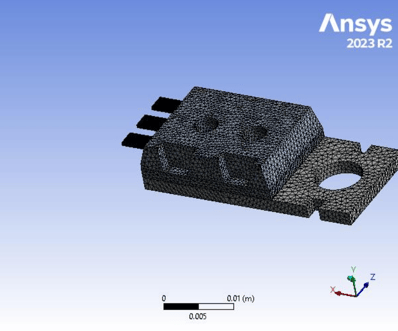
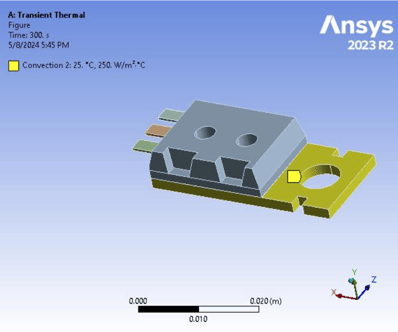
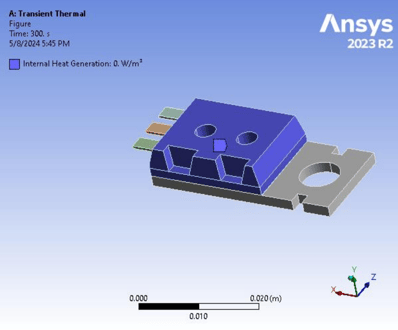
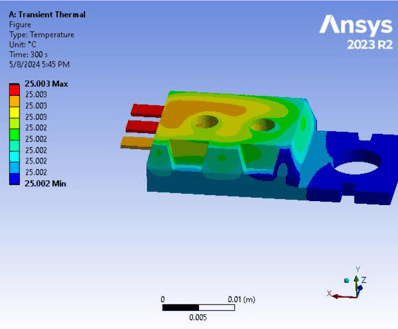
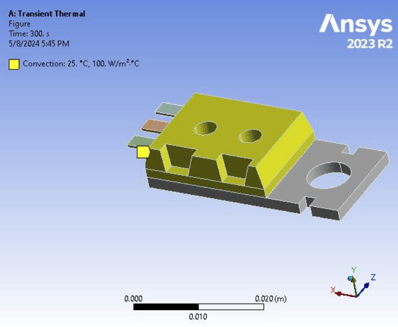





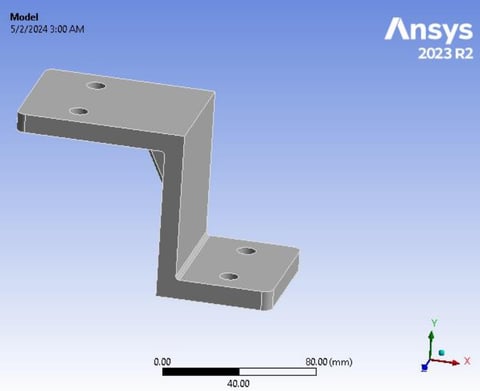

Optimization of Support Bracket
This simulation investigates and optimizes a structural steel support bracket subjected to vertical loading. The bracket includes a vertical web that supports the load applied to the top face. The structure is fully constrained at the two mounting holes on the base plate, and the base surface is restricted from moving perpendicularly to its plane, mimicking realistic fixed support conditions.
Using ANSYS Static Structural, the bracket was analyzed for varying web lengths (50–70 mm), web thicknesses (4–6 mm), and applied loads (2000–3000 N). The goal was to evaluate structural performance under different configurations and identify the optimal geometry that minimizes mass while maximizing safety.
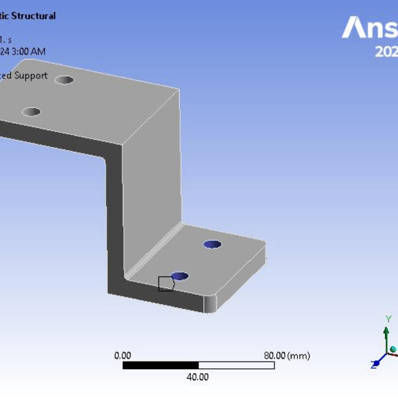
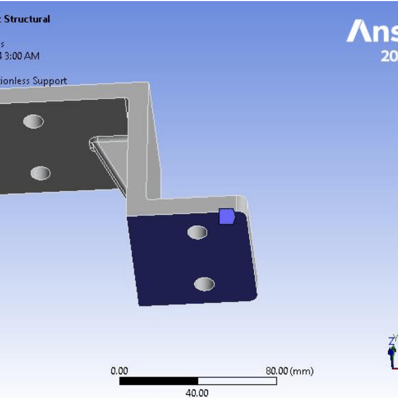
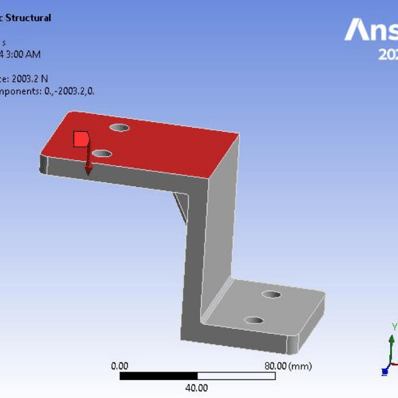
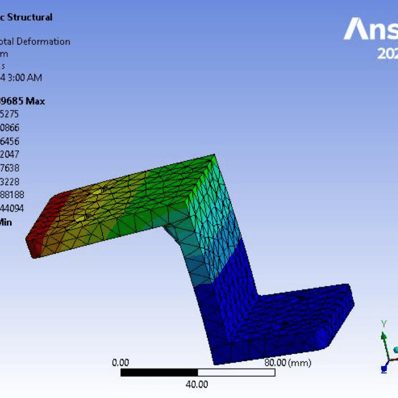
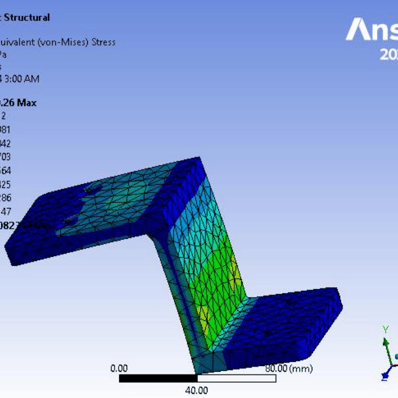
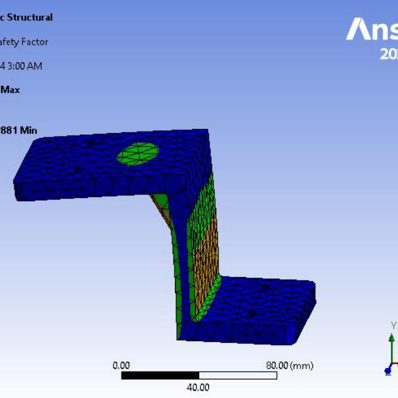
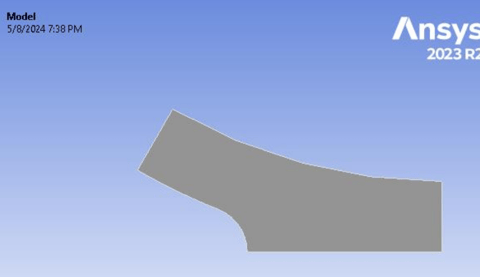

Tri-plate Optimization
A static structural analysis was performed in ANSYS Workbench on a tri-plate model subjected to -50 MPa pressure. To reduce computation time, symmetry was used to analyze one-sixth of the full model. Total deformation and equivalent von-Mises stress were evaluated, and results were validated by comparing the reduced model with the full geometry.
An optimization study followed, aiming to minimize model mass while keeping the maximum stress below 100 MPa. Design variables included plate width (20–30 mm) and tri-plate radius (5–15 mm), both varied in 1 mm increments. The optimal geometry was applied to the model, and a second structural analysis confirmed reduced mass while maintaining stress limits.
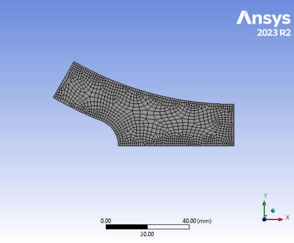
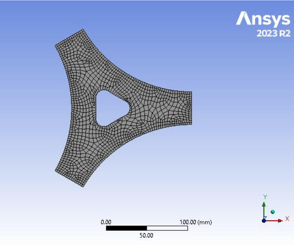
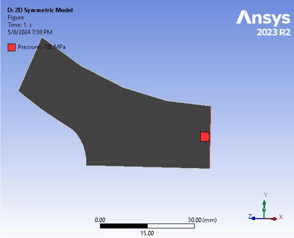
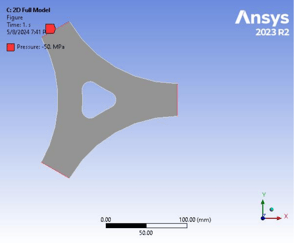
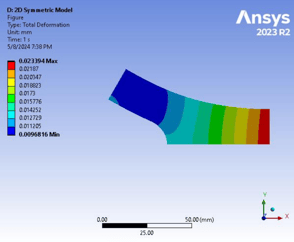
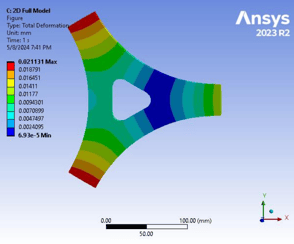
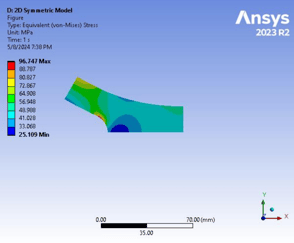
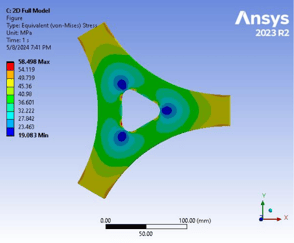








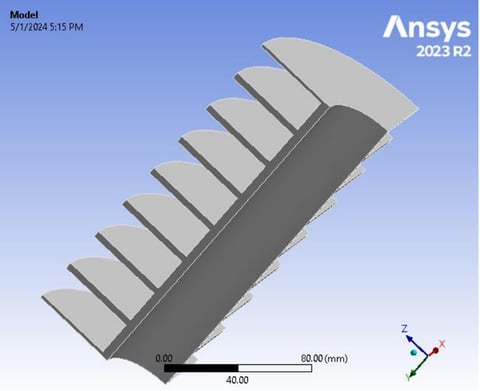

Steady State Thermal Fin Heat Exchanger
A steady-state thermal simulation was conducted in ANSYS Workbench to analyze the temperature distribution in an aluminum alloy section of a fin-and-tube heat exchanger. Leveraging axial symmetry, only a 90° section of the model was analyzed to improve efficiency. The tube carries a hot fluid, inducing a temperature gradient along the wall—modeled using a function load ranging from 200°C at the inlet to 150°C at the outlet. Exterior surfaces were subjected to convective boundary conditions. The study aimed to evaluate the steady-state thermal profile across the exchanger to support thermal performance assessment and potential design refinement.
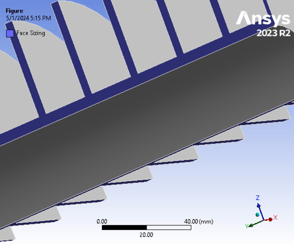
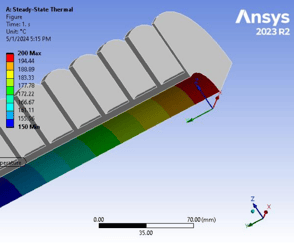
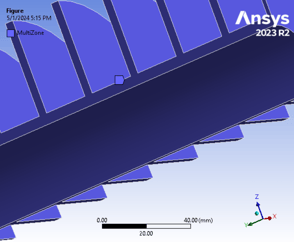
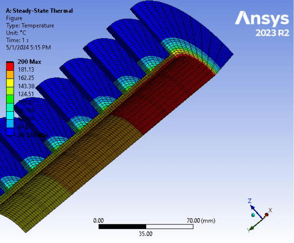
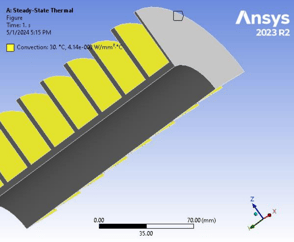
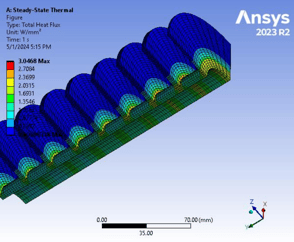
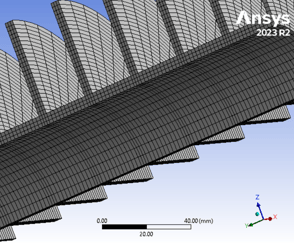
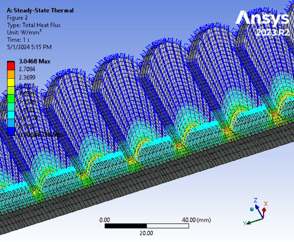








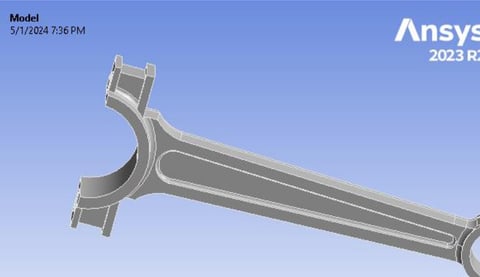

Static Structural & Modal
This simulation performs a modal analysis of an aluminum connecting rod to determine its first six natural frequencies and corresponding mode shapes. The component is modeled with a high-resolution mesh using an element size of 0.75 mm, and the cylindrical portion of the rod is constrained with a fixed support to simulate realistic mounting conditions.
The objective was to capture vibrational characteristics crucial for fatigue avoidance and structural resonance prediction in high-speed engine applications.
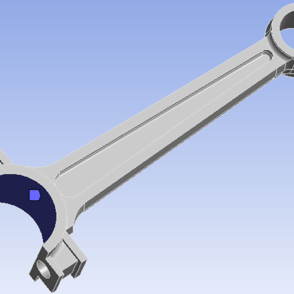
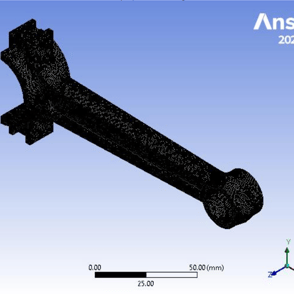
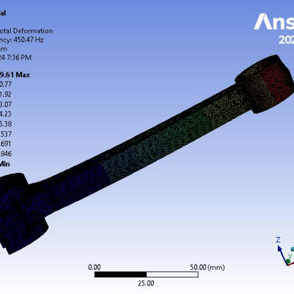
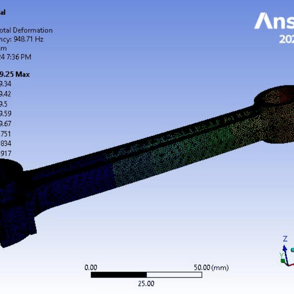
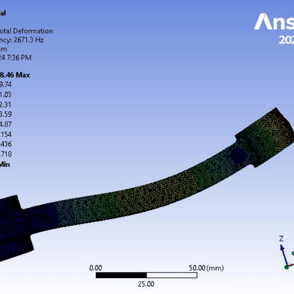
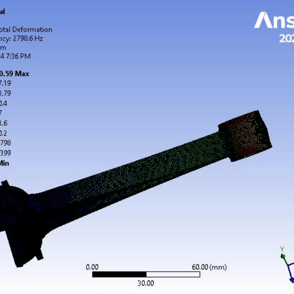
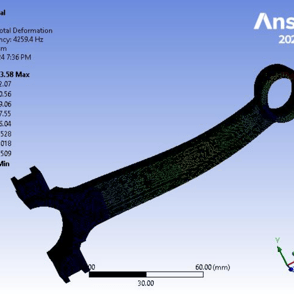
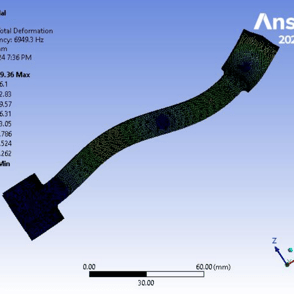
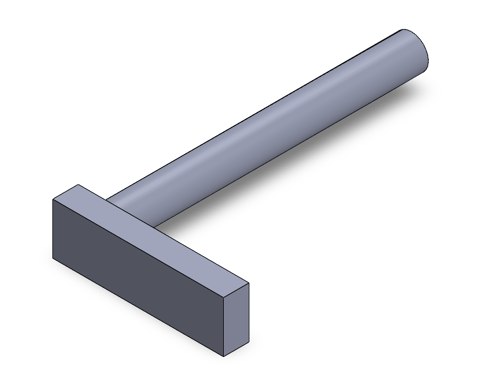

L Beam Optimization Study
In this simulation, the Optimization Design tool in SOLIDWORKS Simulation was used to minimize the mass of an L-shaped cantilever beam under a specified load condition. The part, made from Alloy Steel, consists of a long cylindrical rod joined perpendicularly to a rectangular bar. The beam is fixed at the end of the cylindrical rod, and a downward force is applied at the free end of the rectangular section. The simulation aimed to reduce the part’s weight while ensuring structural integrity under load by defining geometric parameters as variables and applying constraints related to stress and deflection.
The optimization process iteratively evaluated different configurations by modifying the design variables within defined ranges. Constraints ensured that stresses remained within safe limits and that deflections did not exceed acceptable values. The setup also involved plotting Local Trend Graphs to visualize how each parameter influenced the design goal, helping refine the optimization path toward the lightest viable design.
